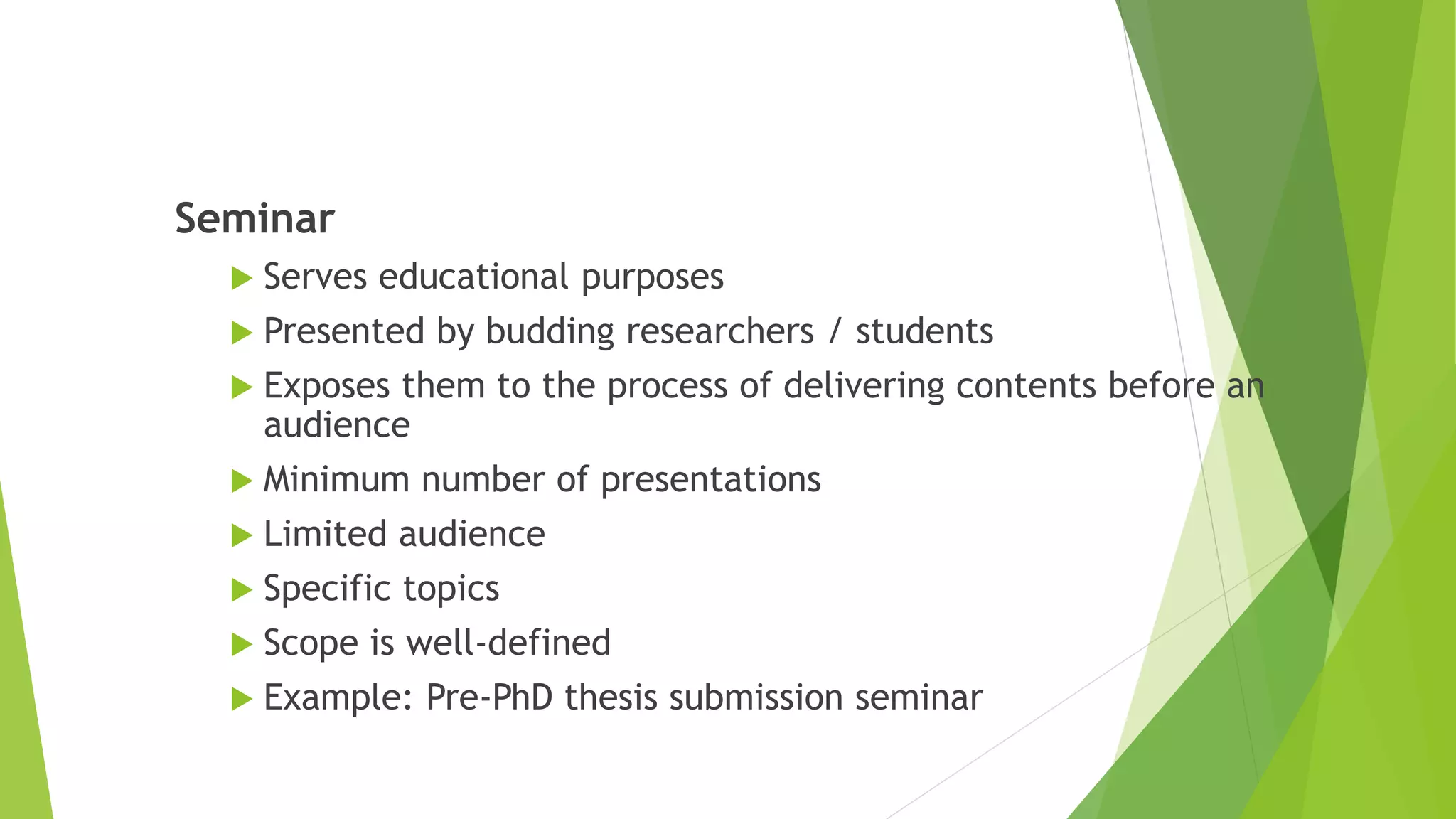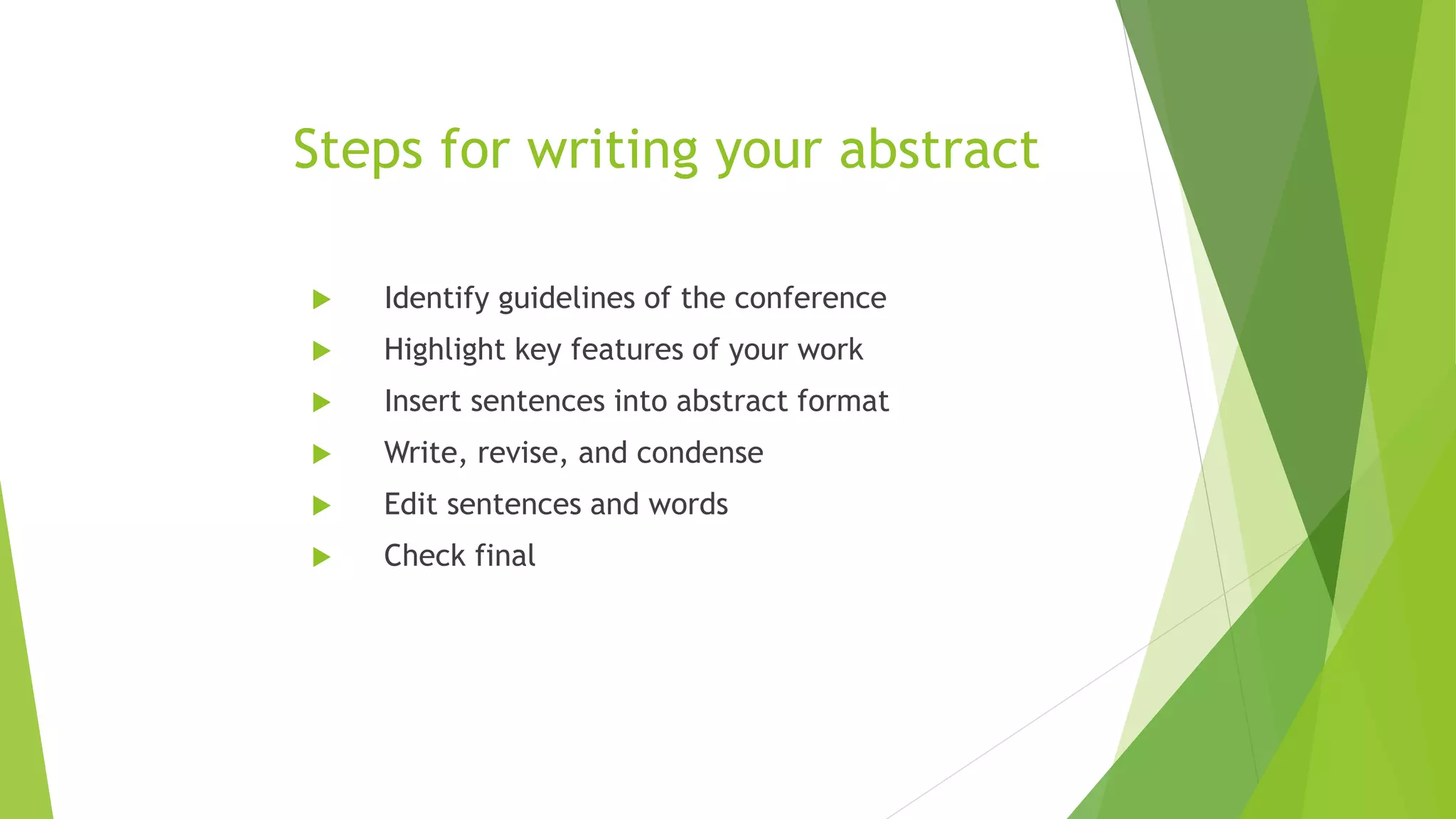This document discusses the differences between various types of academic events such as symposiums, workshops, seminars, conferences, and congresses. It notes that conferences typically focus on current trends in a field, involve abstract submissions that may undergo peer review, and include both oral and poster presentations. The document provides guidance on writing abstracts for conferences, including following a structured IMRAD format, keeping the abstract concise, and focusing on the study's purpose, methods, key results, and conclusions. It emphasizes including something novel in the abstract and cautioned against submitting already published, plagiarized, fabricated, or incomplete work.


















![Authorship
First Author:
(Usually the corresponding author too)
The one who has carried out the actual work /and the one who wrote the abstract/ and the one who will present it
during the conference
[This is in contrast to a publication]
Last (Senior) Author:
[Corresponding author for publication in a journal]
The one who originally conceived the study, planned it and approved the final manuscript to be published
Second/ third/.. authors:
Who helped in carrying out the work and in manuscript preparation](https://image.slidesharecdn.com/lucknow-abstractforconferences-190712052809/75/Writing-abstracts-for-conferences-19-2048.jpg)
















